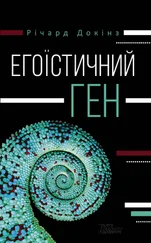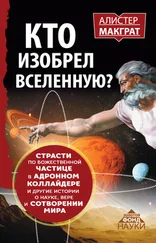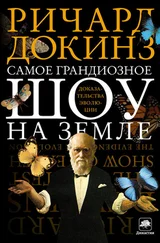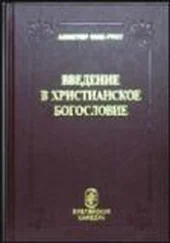Richard Dawkins, River out of Eden: A Darwinian View of Life. London: Phoenix, 1995, 133.
Отличное исследование этого вопроса можно найти в работе Michael Ruse, Darwin and Design: Does Evolution Have a Purpose? Cambridge, MA: Harvard University Press, 2003.
Richard Dawkins, The Blind Watchmaker: Why the Evidence of Evolution Reveals a Universe without Design. London: Longman, 1986, 43.
Richard Dawkins, Climbing Mount Improbable. London: Viking, 1996, 64.
Climbing Mount Improbable, 126-79.
Индекс, конечно, не охватывает все; см., например, краткую (и несколько туманную) дискуссию о Боге, находящуюся в The Blind Watchmaker, 141. Но этот пропуск интересен сам по себе.
Stephen Jay Gould, «Impeaching a Self-Appointed Judge». Scientific American 267, No. 1 (1992): 118-21.
См. Alister E. McGrath, A Scientific Theology 1: Nature. London: Continuum, 2001, 81-133.
Richard P. Feynman, What Do You Care What Other People Think? London: Unwin Hyman, 1989; The Meaning of It All. London: Penguin, 1999.
The Selfish Gene, 198.
TheSelfish Gene, 330 (этот пассаж добавлен во втором издании).
Richard Dawkins, A Devil's Chaplain. London:Weidenfeld&Nicolson, 2003, 139.
Для более детального рассмотрения см. Robert D. Sider, «Credo Quia Absurdum?» Classical World 73 (1978): 417-19.
Tertullian, de paenitentia v, 4. «Crucifixus est dei filius; non pudet, quia pudendum est. Et mortuus est dei filius; credibile prorsus est, quia ineptum est. Et sepultus resurrexit; certum est, quia impossibile».
James Moffat, «Tertullian and Aristotle». Journal of Theological Studies 17 (1916): 170-1.
См.: Robert D. Sider, Ancient Rhetoric and the Art of Tertullian. Oxford: Oxford University Press, 1971, 56-9.
Tertullian, de poenitentia I, 2. «Quippe res dei ratio quia deus omnium conditor nihil non ratione providit disposuit ordinavit, nihil enim non ratione tractari intellegique voluit».
W. H. Griffith-Thomas, The Principles of Theology. London: Longmans, Green, 1930, xviii. Вера, таким образом, включает «уверенность в свидетельстве» и «несомненную верность»; она не «слепая, но разумная» (xviii-xix).
Я имел ввиду работы следующих авторов: Richard Swinburne, The Coherence of Theism. Oxford: Clarendon Press, 1977; Nicholas Wolterstorff, Reason within the Bounds of Religion. Grand Rapids, MI: Eerdmans, 1984; Alvin Plantinga, Warranted Christian Belief. Oxford: Oxford University Press, 2000.
Elliott R. Sober, «Modus Darwin». Biology and Philosophy 14 (1999): 253-78.
Richard Swinburne, The Resurrection of God Incarnate. Oxford: Clarendon Press, 2003.
Timothy Shanahan, «Methodological and Contextual Factors in the Dawkins/ Gould Dispute over Evolutionary Progress». Studies in History and Philosophy of Science 31 (2001): 127-51.
Gilbert Harman, «The Inference to the Best Explanation». Philosophical Review 74 (1965): 88-95. Недавнее исследование этой важной темы в философии науки представлено в: Peter Lipton, Inference to the Best Explanation. London: Routledge, 2004.
Paul R. Thagard, «The Best Explanation: Criteria for Theory Choice». Journal of Philosophy 75 (1976): 76-92, quote at 77.
Thagard, «The Best Explanation»,74.
См. Michael Ruse, «Darwin's Debt to Philosophy: An Examination of the Influence of the Philosophical Ideas of John F. Herschel and William Whewell on the Development of Charles Darwin's Theory of Evolution». Studies in the History and Philosophy of Science 66 (1975): 159-81; Richard R. Yeo, «William Whewell's Philosophy of Knowledge and Its Reception». В William Whewell: A Composite Portrait, edited by Menachem Fisch and Simon Schaffer, 175-99. Oxford: Clarendon Press, 1991.
S. A. Kleiner, «Problem Solving and Discovery in the Growth of Darwin's Theories of Evolution». Synthese 62 (1981): 119-62, especially 127-9.
Charles Darwin, The Origin of Species. Harmondsworth: Penguin, 1968, 230.
Darwin, The Origin of Species, 205.
Harman, «Inference», 89. Теории могут быть описаны как пригодные для данного случая, если они разрабатываются для специфической и ограниченной цели объяснения известных явлений (иногда рассматриваются как «ретродукция»). Они контрастируют с предсказательными теориями, которые порождают новые предсказания, которые не содержатся в известных наблюдениях.
Как указывает Gerd Buchdahl, «History of Science and Criteria of Choice». In Minnesota Studies in the Philosophy of Science, edited by Roger H. Steuwer, 204-30. Minneapolis: University of Minnesota Press, 1970.
Nancy Cartwright, How the Laws of Physics Lie. Oxford: Clarendon Press, 1983.
Как полагает Bas van Fraassen, «The Pragmatics of Explanation». American Philosophical Quarterly 14 (1977): 143-50.
James R. Moore, The Post-Darwinian Controversies: A Study of the Protestant Struggle to Come to Terms with Darwin in Great Britain and America, 1870-1900. Cambridge: Cambridge University Press, 1979.
C. S. Lewis, «Is Theology Poetry?» In C. S. Lewis: Essay Collection, 1-21. London: Collins, 2000, quote at 21.
Эта точка зрения акцентирована физиком и богословом Джоном Полкинхорном. См.: John Polkinghorne, TheWay theWorld Is. London: SPCK, 1983; Science and Creation: The Search for Understanding. London: SPCK, 1988.
The Selfish Gene, 192.
The Selfish Gene, 193.
John A. Ball, «Memes as Replicators». Ethology and Sociology 5 (1984): 145-61.
A Devil's Chaplain, 145.
A Devil's Chaplain, 124.
Я использую обе иллюстрации в своей книге: Alister McGrath, Creation. London: SPCK, 2004.
Читать дальше








